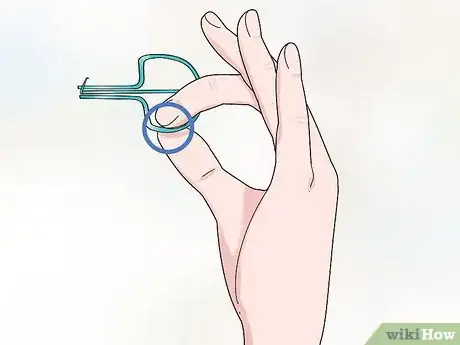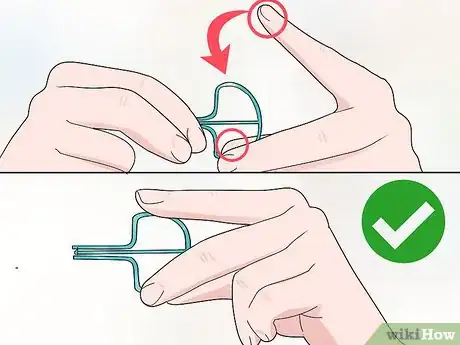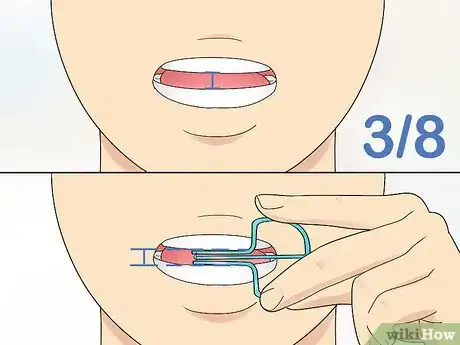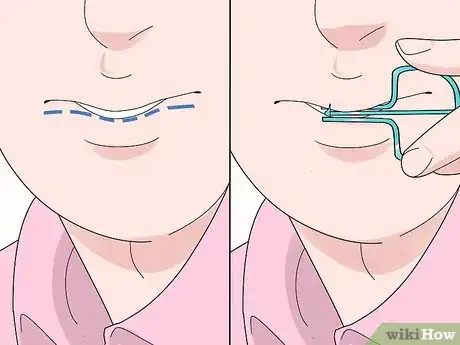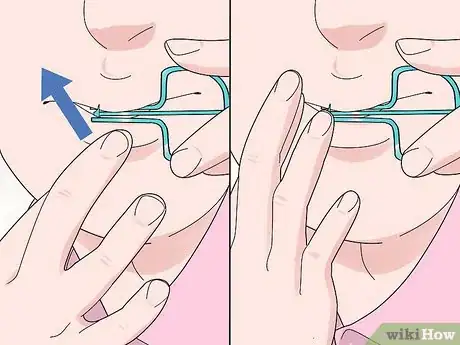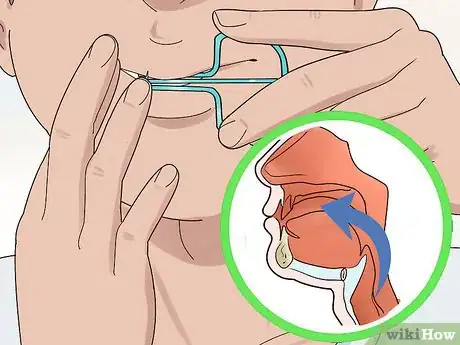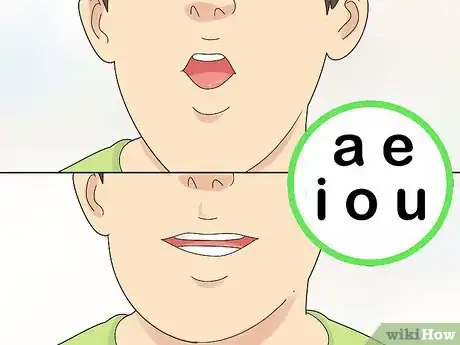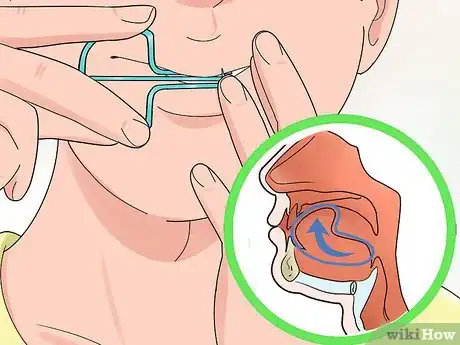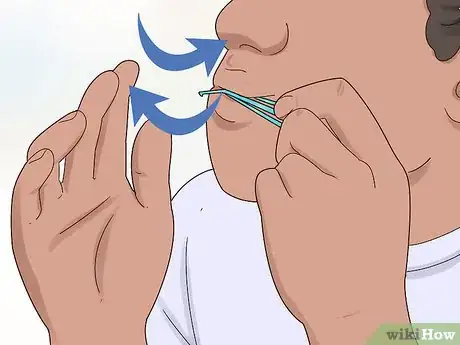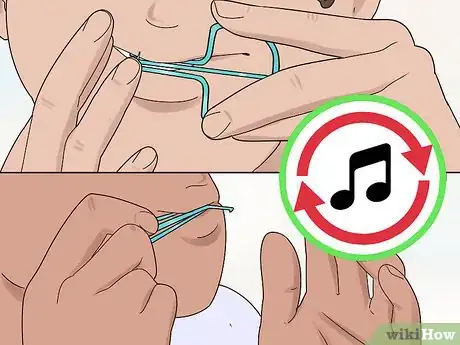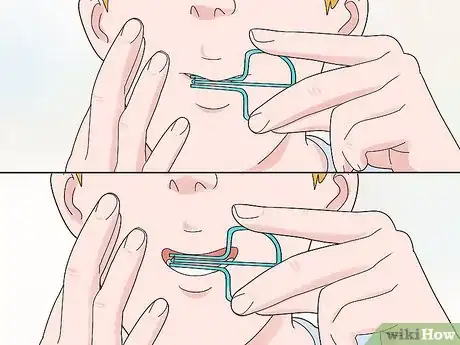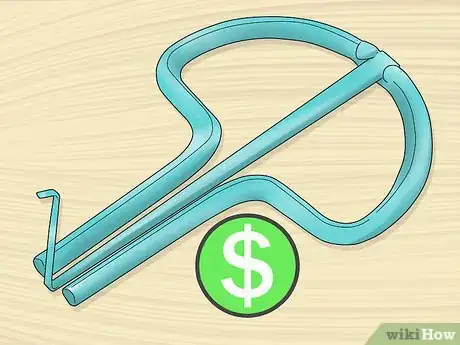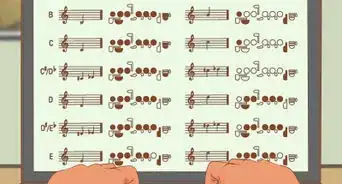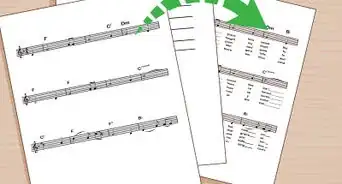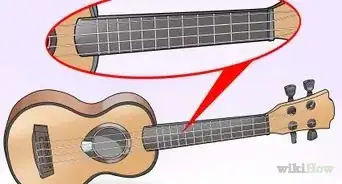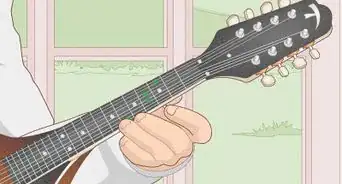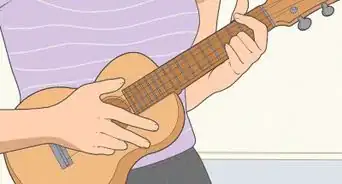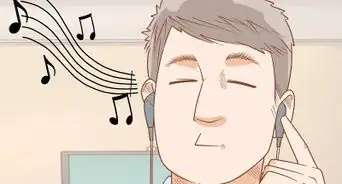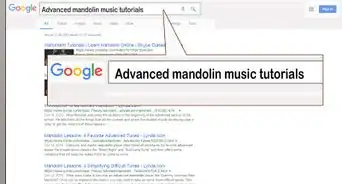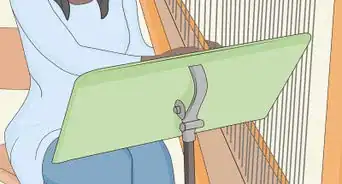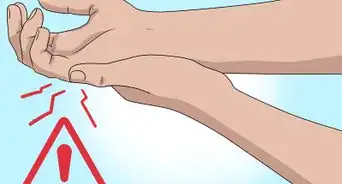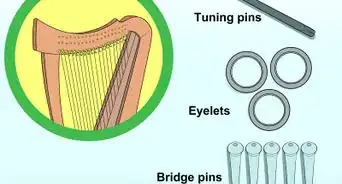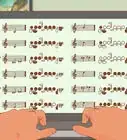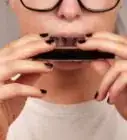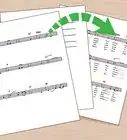This article was co-authored by wikiHow Staff. Our trained team of editors and researchers validate articles for accuracy and comprehensiveness. wikiHow's Content Management Team carefully monitors the work from our editorial staff to ensure that each article is backed by trusted research and meets our high quality standards.
There are 8 references cited in this article, which can be found at the bottom of the page.
This article has been viewed 149,631 times.
Learn more...
The Jew’s harp, also known as a mouth harp and jaw harp, is a simple instrument dating back from 4th century BCE.[1] Playing the Jew's harp takes a lot of practice and dedication. The Jew’s harp can be used in a wide variety of folk music, but can also be used in experimental projects.
Steps
Holding a Jew’s Harp
-
1Position your hand. Use your non-dominant hand (right hand for lefties) to grip the Jew’s harp. Make a “C” shape with your thumb and index finger. This will be where you hold the frame of the harp. Align the circular portion of the Jew’s harp with your hand’s “C” shape.
- The harp is composed of a circular frame and two long arms that secure the reed.
-
2Grip the harp. Use a light grip with your thumb and index finger around the frame. Make sure that the trigger is facing away from your face. The trigger is the part of the harp that protrudes from the reed in the center.
- If your harp is rounder than your grip, use your middle finger and index finger to grip the shaft. Then hold the frame secure by using your thumb.
Advertisement -
3Position it in your mouth. Open your teeth about ⅜” apart and insert the arms of the harp against your teeth. Again, position the harp so the reed’s trigger is facing away from your face. The key is to rest the beveled edge of the harp firmly against your teeth. Do not put your teeth on top of the beveled edge. Press the Jew’s harp firmly against your teeth. It is essential, for the sake of your teeth, that you use firm pressure.[2]
- If you do not position the harp in the right position, you could chip your tooth.
-
4Curl your lips. To get a good sound out of the harp, the harp must be touching your teeth. The opening must be clear for the reed to produce tones. Curl your lips slightly over your teeth and onto the frame. Be sure to keep the pathway of the trigger clear.[3]
Playing a Jew’s Harp
-
1Practice plucking. Use your dominate hand to pluck the trigger lightly. It is essential that you do not use a powerful pluck in the beginning. This is when you’re the most susceptible to chipping a tooth. To avoid damaging your teeth, keep a firm pressure between the harp and your teeth. Pluck the trigger inwards or outwards depending on your preference.
- An inward pluck is when the trigger is plucked in the direction of your mouth.
- An outer pluck is when the trigger is plucked away from your mouth.[4]
- Find a comfortable pluck. Some Jew’s harpist use their index finger to pluck while others use their whole hands. Figure out what is comfortable for you. Try plucking a rhythm and repeat that rhythm. This will help you develop your comfortability with plucking.
-
2Open your throat. To get the most amplified sound out of the Jew’s harp, you must open your throat. It's common to open your throat if you are chugging a liquid. Do this same technique with your throat while playing the Jew’s harp.
-
3Change the shape of your mouth. Try modifying the shape of your throat. You do this in everyday speech. Imagine you’re saying the vowels: a, e, i, o and u. These shapes will all give you different tones. Practice a consistent pluck while changing the shape of your mouth.[5]
- You can reach a higher pitch by widening your mouth. Similarly, you can reach a lower tone by narrowing your mouth.
-
4Move your tongue. Your tongue also plays a part in altering the sound of a Jew’s harp. Experiment with different positions for your tongue. Try flickering your tongue to the back of your throat for a nice effect.[6]
-
5Modify your breathing. Different breathing variations will modify your tone. Breathing out while playing will create a loud and buzzy sound. Breathing in will create a softer buzzing sound. Use these techniques as accents. Breathe through your nose during normal play.[7]
-
6Practice your repertoire of sounds. Continue to experiment with different combinations of the above techniques. Once you begin to feel comfortable with different sounds, try to develop a melody out of the Jew’s harp. It will take a lot of practice to play cohesive melodies on the Jew’s harp. [8]
- You won’t be able to play distinct melodies until you’ve mastered all the basics.
- Try something experimental on the Jew’s harp. Try whispering words while playing. Play around and try to have fun with it.
-
7Play notes on the harp. Differentiating notes on purpose is difficult for both players and listeners. The particular note you produce depends on the quality and make of your Jew’s harp. Play notes by playing open and closed sounds. Open sounds are all the sounds you’ve produced thus far. Closed sounds are achieved by closing your throat, or your glottis. Then use air pressure to open your glottis by saying “A.”
- This will produce an overtone which is essential for playing different notes.[9]
- Use a tuner while you are practicing to see if you are able to hit a perfect note. Then practice the other techniques and adjust your mouth till those sounds create a different note.
- Again, playing intentional notes is difficult for the Jew’s harp.
Expanding Your Ability
-
1Seek out recordings. There are plenty of recordings that feature a Jew’s harp. It is typically used in old time folk and country music, but it is native to eastern European folk music. Listen to these popular recordings featuring a Jew’s harp:
- We’re Allowed by The Odd Tones
- Bumblebees Can Fly by Gorgon Frazier
- Mouthing Off by Wayland Harman[10]
-
2Watch videos. Search through the internet for a wide range of different players with unique styles. Watch the videos with your Jew’s harp in hand to try out new techniques. Videos of other players can inspire you to become a better harpist.
- Youtube.com has plenty of videos by pros and amateurs. There are even how to videos that can help improve your sound.
-
3Purchase a good Jew’s harp. A common reason for a lack in interest in playing a Jew’s harp is playing a cheap harp. The popular Snoopy’s mouth harps may be cheap and the most accessible, but they don’t sound good. Spend an extra ten dollars on a better Jew’s harp.
- Some harps are even sold by the key like A, C or D.[11]
Community Q&A
-
QuestionCan these break my teeth?
 Community AnswerYes, but it does not happen that often. Just don't press too hard and you should be fine.
Community AnswerYes, but it does not happen that often. Just don't press too hard and you should be fine.
References
- ↑ http://www.silkroadfoundation.org/newsletter/vol2num2/Harp.htm
- ↑ https://www.davidholt.com/details/music/folk-instruments/jaw-harp/
- ↑ http://www.mouthmusic.com/instrct2.html
- ↑ https://natecraun.net/articles/jawharp.html
- ↑ https://natecraun.net/articles/jawharp.html
- ↑ http://www.jewsharpguild.org/play.html
- ↑ https://www.davidholt.com/details/music/folk-instruments/jaw-harp/
- ↑ https://natecraun.net/articles/jawharp.html
- ↑ http://varganist.ru/46e.html
- ↑ http://www.mouthmusic.com/mmprec.htm
- ↑ http://www.mouthmusic.com/instrct2.html
- Videos provided by Jack Pearson
About This Article
A Jew’s Harp, also known as a mouth harp or a jaw harp, is a simple instrument that can make a wide variety of tones. To play one, hold the circular part of the harp with your pointer finger, middle finger, and thumb. Then, bring the harp to your mouth and curl your lips slightly over your teeth and onto the frame. Use your non-dominant hand to very gently pluck the trigger. Be careful, because plucking too hard can crack your teeth. To get the most amplified sound, try to open your throat as you play. You can also experiment with changing the shape of your mouth to get different sounds. To learn how to improve your playing, read on!
